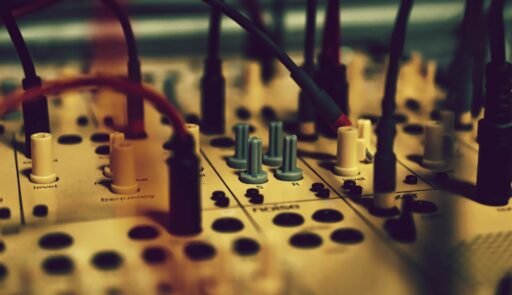If you’re looking for natural relief from anxiety, one option you may have come across is using TENS pads. These small electrical devices have been gaining popularity for their ability to provide non-invasive pain relief, but did you know they can also be used to help manage anxiety? In this article “Where To Place Tens Pads For Anxiety”, we’ll explore the different placement options for TENS pads to target anxiety symptoms, offering you a safe and effective method to find some much-needed calm in your everyday life.
1. Understanding TENS Therapy
1.1 How TENS Therapy Works
TENS therapy, which stands for Transcutaneous Electrical Nerve Stimulation, is a non-invasive and drug-free method of managing pain and promoting relaxation. It involves the use of a TENS device that delivers small electrical pulses to specific areas of the body through adhesive electrode pads. These electrical pulses stimulate the nerves in the area, effectively blocking the pain signals from reaching the brain and providing temporary relief. Additionally, TENS therapy also stimulates the production of endorphins, the body’s natural painkillers, further enhancing the pain relief.
1.2 Benefits of TENS Therapy
There are several benefits to using TENS therapy for pain management and relaxation. Firstly, it offers a drug-free alternative to manage pain, minimizing the risk of adverse side effects that may accompany medications. The use of TENS therapy also allows individuals to have control over their pain management, as they can adjust the intensity and frequency of the electrical pulses according to their comfort level.
Furthermore, TENS therapy promotes relaxation by stimulating the body’s production of endorphins, which can help reduce stress and improve overall mood. It can also improve blood circulation in the treated area, which can aid in the healing process. TENS therapy is widely used for various conditions, including chronic pain, muscle tension, arthritis, and even anxiety.

2. Where To Place Tens Pads For Anxiety
2.1 General Placement Guidelines
To optimize the effectiveness of TENS therapy, it is essential to locate the correct placement points for the electrode pads. General guidelines suggest placing the pads on the muscle groups or along the path of the nerves that are associated with the specific area of pain or discomfort. It is also recommended to avoid placing the pads directly over joints, bony prominences, or broken skin.
2.2 Neck and Shoulders
If you are experiencing pain or tension in your neck and shoulders, placing the electrode pads on the back of your neck, along the trapezius muscle, can be beneficial. Another effective placement point is on the upper shoulder muscles, near the base of the neck. Ensure that the pads are positioned symmetrically, with one on each side of the spine.
2.3 Upper Back
To target pain or tension in the upper back, consider placing the electrode pads on the affected muscles, such as the rhomboids or the trapezius muscle. The pads should be placed on both sides of the spine to ensure even stimulation.
2.4 Abdomen
For abdominal pain or discomfort, start by placing one pad on either side of the spine, just above the waistline. If the pain is more localized, you can also try placing the pads directly on the painful area. Remember to avoid the bony areas of the ribcage.
2.5 Wrists
If you are experiencing pain or stiffness in your wrists, place the electrode pads on the front and back of the affected wrist. Take care to avoid placing the pads directly over any cuts or open wounds in the area.
2.6 Lower Back
To target lower back pain, one common placement point is on the lower back muscles, near the spine. Position the pads symmetrically on both sides of the spine, avoiding the bony areas. If the pain is more concentrated on one side, adjust the placement accordingly.
2.7 Hips and Pelvis
For pain in the hips or pelvis, consider placing the electrode pads on the muscles in the area, such as the glutes or the hip flexors. Ensure that the pads are positioned symmetrically on both sides of the body.
2.8 Chest
If you are experiencing chest pain or discomfort, it is crucial to consult a healthcare professional before using TENS therapy in this area. However, if approved, placing the electrode pads on the chest muscles, near the pain site, can help provide relief. Proper placement is essential to avoid interference with the heart’s function.
2.9 Feet
To address foot pain or discomfort, position the electrode pads on the sole of the foot, targeting the specific area of discomfort. Alternatively, you can place one pad on the sole and the other on the top of the foot, ensuring they are not directly touching each other.
2.10 Wrist-to-Forehead Placement
For those experiencing anxiety, tension, or headaches, a unique placement point to consider is from the wrist to the forehead. This placement involves placing one electrode pad on the inside of the wrist and the other on the forehead, ensuring they do not touch. It is believed to help promote relaxation and reduce stress.

3. Personalizing Your TENS Pad Placement For Anxiety
3.1 Experimenting with Placement
While the aforementioned placement points serve as a general guide, it is important to remember that everyone’s pain and discomfort can vary. What may work for one person may not be as effective for another. Therefore, it is recommended to experiment with different placement points to find what works best for you. Try moving the pads slightly to find the spot where you experience the most relief.
3.2 Listening to Your Body
When personalizing your TENS pad placement, it is crucial to listen to your body’s feedback. Pay attention to the intensity and location of your pain or discomfort. If you find that a particular placement point is not providing the desired relief, don’t hesitate to try a different location to target the area more effectively. It may take some trial and error to find the optimal placement for your unique needs.
4. Considerations and Precautions
4.1 Consulting with a Healthcare Professional
Before starting TENS therapy, it is important to consult with a healthcare professional, especially if you have any underlying health conditions or are pregnant. They can provide personalized guidance and ensure that TENS therapy is safe and suitable for your specific situation. Additionally, if you experience any unusual or prolonged discomfort during or after TENS therapy, it is advisable to seek medical advice.
4.2 Safe Usage Guidelines
While TENS therapy is generally safe, there are a few precautions to keep in mind. Avoid placing the electrode pads on broken or irritated skin, as it may cause skin irritation or discomfort. Always follow the instructions provided with your TENS device, including proper cleaning and storage of the electrode pads. It is important to start with the lowest intensity setting and gradually increase it to a comfortable level. Additionally, never use TENS therapy while driving or operating heavy machinery to avoid any potential distractions.

5. Conclusion: Where To Place Tens Pads For Anxiety
TENS therapy can be a valuable tool for managing pain and promoting relaxation. By understanding how it works and familiarizing yourself with effective placement points, you can personalize your TENS pad placement to target your specific areas of pain or discomfort. Remember to consult with a healthcare professional before starting TENS therapy. Always listen to your body’s feedback to find the most effective placement for your unique needs. With the proper usage and precautions, TENS therapy can provide you with the relief and relaxation you deserve.
Frequently Asked Questions:
- Where not to put TENS pads? Avoid placing TENS pads over areas with broken skin, irritation, or rashes. Also, steer clear of sensitive areas, such as the eyes, mouth, or front of the neck.
- Can a TENS unit help with stress? Yes, TENS units can help alleviate stress by promoting relaxation and easing muscle tension. They may not directly target stress but can contribute to overall well-being.
- Where do you put TENS pads for pleasure? TENS pads should be placed on areas of the body where pleasure is derived from muscle relaxation, such as the shoulders, lower back, or thighs. Use responsibly and follow guidelines.
- How do I know where to put my TENS unit? Identify the specific area of discomfort or tension and place TENS pads around that region. Follow the instructions provided with your TENS unit for proper placement.
- Can I sleep with a TENS machine on? It’s generally safe to sleep with a TENS machine on, but use a lower intensity setting. Ensure the pads are secure, and consult with a healthcare professional if you have concerns.
- Should muscles twitch when using TENS? Muscle twitching may occur with TENS use, especially at higher intensities. It’s often a normal response and can contribute to muscle relaxation.
- Can you use a TENS unit to stimulate the brain? TENS units are not typically used to stimulate the brain directly. They are designed for peripheral nerves and muscles.
- Can a TENS unit stimulate the vagus nerve? While TENS units primarily target peripheral nerves, some research suggests they may indirectly influence the vagus nerve. However, specific vagal nerve stimulation devices are designed for this purpose.
- Can I use a TENS unit on my neck? Yes, TENS units can be used on the neck, but caution is advised. Keep the intensity low and avoid placing pads near the front of the neck or over sensitive structures.
- Is TENS like a massage? TENS can provide a sensation similar to massage by relieving muscle tension and promoting relaxation through electrical stimulation.
- Can TENS pads touch? TENS pads should not touch each other. Maintain an appropriate distance to avoid unwanted interactions between the electrodes.
- Can you use a TENS unit for Kegels? TENS units can be used for pelvic floor exercises, including Kegels, to help strengthen and tone muscles. Consult with a healthcare provider for guidance.
- How high should TENS be set? Start with a low intensity and gradually increase until you feel a strong but comfortable sensation. The intensity level varies based on individual tolerance.
- Is a TENS unit for nerves or muscles? TENS units primarily target nerves and muscles, providing pain relief by altering pain signals and promoting muscle relaxation.
- Does a TENS unit promote healing? While TENS units can help manage pain and improve muscle function, their direct role in promoting healing is limited. Consult with a healthcare professional for comprehensive treatment.
- Does TENS release knots? TENS can contribute to muscle relaxation, potentially aiding in the release of knots. It’s part of a broader approach to managing muscle tension.
- What are the disadvantages of TENS? Disadvantages may include skin irritation, discomfort, or the need for caution in certain health conditions. Consultation with a healthcare professional is advisable.
- What is better than a TENS unit? Alternatives include physical therapy, massage, or other pain management techniques. The choice depends on individual preferences and health conditions.
- Does TENS release endorphins? TENS may stimulate the release of endorphins, the body’s natural painkillers, contributing to pain relief and an improved sense of well-being.
- Should I ice after using a TENS unit? Icing after TENS use can complement the therapy by reducing inflammation and enhancing the overall effectiveness. Consult with a healthcare provider for personalized advice.
- What is electrical brain stimulation for anxiety? Electrical brain stimulation techniques, such as transcranial electrical stimulation (tES), are being explored for anxiety management. However, their efficacy is still under investigation.
- Can you overuse TENS? Overusing TENS may lead to skin irritation or desensitization. Follow guidelines, take breaks between sessions, and consult with a healthcare professional if you have concerns.
- Can you use a TENS unit on your face? Avoid using TENS units on the face, especially near the eyes and mouth. Use TENS on the face only under the guidance of a healthcare professional.
- What is burst mode in TENS? Burst mode in TENS involves intermittent bursts of pulses. It’s designed to mimic natural nerve impulses and can be effective for certain types of pain.
Source: Tens